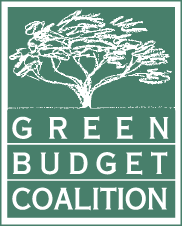Globally, and in Canada the direct exploitation of wildlife is the second largest direct driver of biodiversity loss109 or degradation. Commercial fisheries represent by far the largest harvest of wild Canadian species with a total volume of 805,000 tonnes of fish in 2021. Despite a strong legal and policy framework for fisheries management, Canada’s fisheries have been marred by serial depletion of stocks, and fish populations have decreased on average by 21% between 1970 and 2016.
Meeting the ambitions of the KMGBF with regards to the use of wild species (Target 5) and responding to the challenges of a rapidly warming ocean will require a shift from the current single-species management regime to an ecosystem approach to fisheries management. This shift to an
ecosystem-based approach needs to be supported by robust science, stock assessments, strong policy implementation, and a modern fisheries catch monitoring and observer system.
Advancing the ecosystem approach to fisheries management
In 2011, Canada committed to implementing an ecosystem approach to fisheries management (EAFM) under the Aichi targets (Canada target 9). While the EAFM has long been a departmental direction for DFO, implementation has been opportunistic and inconsistent rather than comprehensive which is why Canada ultimately failed to meet its target by the 2020 deadline. The commitment has now been renewed under the KMGBF under targets 5 and 9. It is critical that the necessary resources be put in place to ensure success and speed up progress toward this commitment. As the House Standing Committee on Fisheries and Oceans recently highlighted, climate change is already having significant impacts on Canada’s oceans and fish stocks, making the critical shift to an EAFM more urgent than ever.
Key legislative and regulatory tools are already in place to support the operationalization of the ecosystem approach through the Sustainable Fisheries Framework (SFF) and the Fish Stock Provisions under the Fisheries Act. The SFF is the primary tool available to ensure the sustainability of Canadian Fisheries. However, even this existing foundational element has not been fully implemented to date, with less than a third of Canadian fish stocks considered to be in the healthy zone and 37% lacking a comprehensive assessment.114 The Green Budget Coalition acknowledges the significant investments made in the implementation of the updated Fisheries Act in previous budgets and recommends building on the critical progress that this investment has enabled.
The Fish Stock provisions provide a critical framework for implementing DFO’s Precautionary Approach policy and for considering fish biology and environmental conditions in fisheries management– key aspects of the ecosystem approach. DFO has already begun work on an operational plan to employ these tools in support of an ecosystem approach and it is paramount that this work be fully supported through necessary capacity funding. Additionally, funding is required to fill immediate data gaps so that the EAFM can be operationalized for priority species – primarily forage fish.
Recommended Investment: $175 million over five years [DFO]
Build a modern fisheries catch monitoring and observer system
Fisheries catch monitoring is essential for science, compliance, improving business performance for fleets, and verification of standards. Canada’s assessments and management of fish populations, including species at risk, rely heavily on at-sea observer coverage and dockside monitoring. There is a global call for a significant increase in monitoring, reporting, and transparency to ensure sustainable fishing.
Canada is supporting improved compliance and monitoring schemes of countries around the globe, leading efforts to adopt high seas inspection schemes, funding global tracking systems, and engaged in negotiations on electronic monitoring standards. However, at home, Canada’s fisheries monitoring is failing to achieve target coverage levels across a wide array of fisheries despite those levels being set at embarrassingly low targets for a leading fishing nation. Moreover, the Auditor General of Canada identified severe shortcomings in Canada’s fisheries monitoring programs.
2024 will be a pivotal year for investing in an overhaul of the systems, and funding the needs identified by the current risk assessment phase of work underway for the National Catch Monitoring policy. Canada will also be required to adopt international electronic monitoring standards and should ensure a domestic standard is in place. Therefore, the Green Budget Coalition is recommending the government invests directly in key areas of the system to kick start an immediate overhaul:
Recommended Investment: $60 million over three years [DFO]
- Support up-front costs of electronic monitoring pilots and increased coverage for high risk fisheries. ($30 million)
- Establish electronic monitoring standards, data management policies, working groups, and modern data processing tools. ($20 million)
- Support recruitment and training for well- paying observer jobs, especially in community and Indigenous based businesses. ($10 million)
Renew and revamp the Atlantic Fisheries Fund
The Green Budget Coalition recommends that the Atlantic Fisheries Fund be renewed and revamped to focus on improving sustainability, reducing ecosystem impacts and supporting adaptation strategies in the Atlantic fishing, shellfish, and marine plant aquaculture, and processing sectors.
Recommended Investment: $250 million over five years [DFO]
- Support initiatives that reduce ecosystem impacts, support adaptation to changing ocean conditions, and contribute to climate mitigation efforts;
- Ensure funding allocations have clear criteria, consistent selection processes and transparent decision-making processes;
- Ensure funding is accessible for small businesses and non-profit organizations, inshore fleets, regenerative aquaculture of shellfish and marine plants, Indigenous and community owned businesses and organizations; and
- Invest in research, development, and implementation of projects aimed at improving sustainability of fishing gear and aquaculture practices.
